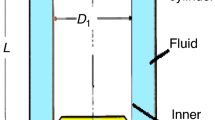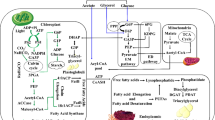Summary
In this article, it was possible to give only a few typical examples of how static mixing units have become indispensable in continuous processes where economy and ecology both play a major role. Decisive factors for the employment of these mixers in such processes are the advantages offered in the form of outstanding mixing performance, high heat and mass transfer, low energy and space requirement as well as practically zero maintenance and wear.
Similar content being viewed by others
References
G. Schneider, “Static mixing units in the petroleum industry,” Sulzer Tech. Rev., No. 1 (1983).
A. Heierle and B. Müller, “Application of static mixers in highly exothermic processes,” Chem. Plants Process., No. 3 (1993).
F. A. Streiff and F. Käser, “Sulzer mixer-reactor SMR for gas/liquid reactions,” 7th European Conference on Mixing (1992).
W. Tauscher, “Advantages for the plastics industry provided by a new polymerization process,” Sulzer Tech. Rev., No. 2 (1991).
“Static mixers in fiber production,” Int Fiber J., No. 5 (1992).
E. Lang, P. Drtina, F. Streiff, and M. Fleischli, “Numerical simulation of the fluid flow and the mixing process in a static mixer,” Int. J. Heat Mass Transfer,38, No. 12, 2239–2250 (1995).
Additional information
Sulzer Chemtech Ltd., CH-8404 Winterthur, Switzerland. Published in Khimicheskoe i Neftyanoe Mashinostroenie, No. 3, pp. 26–32, May–June, 1996.
Rights and permissions
About this article
Cite this article
Tauscher, W. Static mixing and reaction technology. Chem Petrol Eng 32, 224–237 (1996). https://doi.org/10.1007/BF02411592
Published:
Issue Date:
DOI: https://doi.org/10.1007/BF02411592




